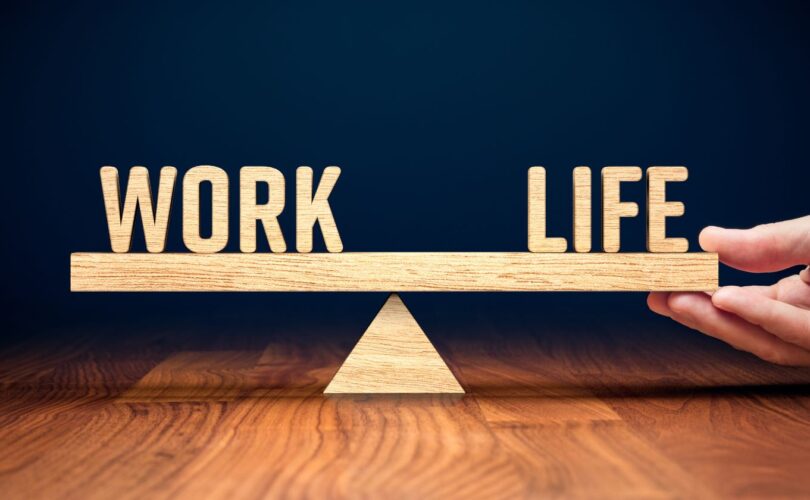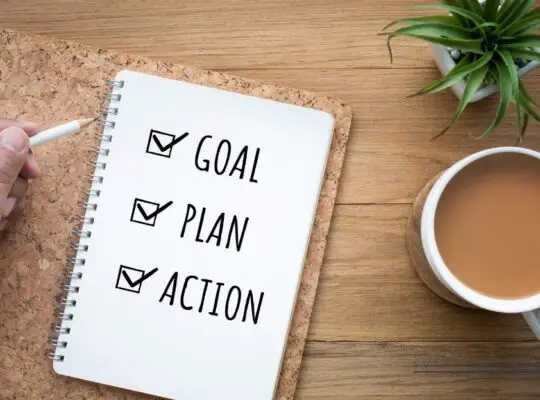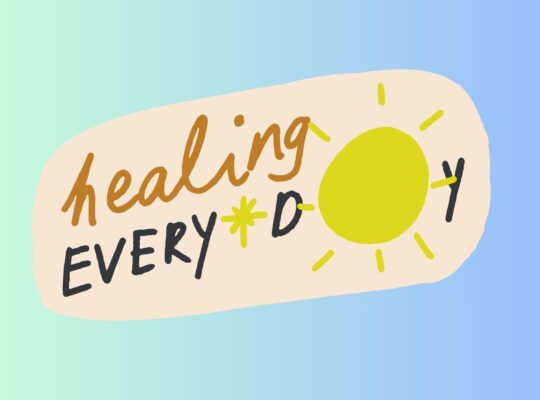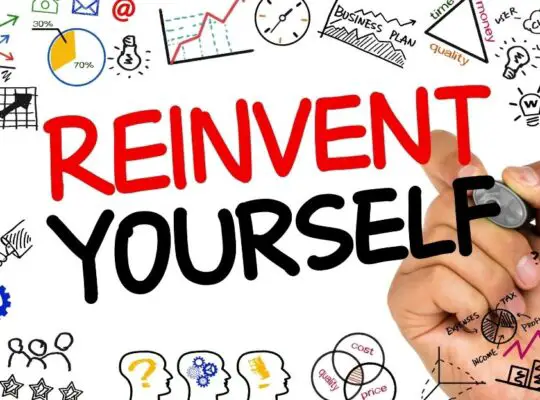Life balance is incredibly important for your overall well being. According to the Australian Institute of Business *, learning how to achieve balance – particularly a good work-life balance – is crucial for a person’s overall happiness because it allows them to properly compartmentalize their stressors so they can actually relax and enjoy their lives when they’re away from work.
Allowing all your work stressors to follow you home impedes your ability to relax and recover from the day, making it far less likely that you will engage in self care, personal hobbies, or anything else that brings you pleasure.
Check out our most popular 30 Day Challenges.
30 Day Challenge To Create Life Balance
Learning how to achieve this life balance can be incredibly difficult, but it is possible – embark on this thirty day challenge to help yourself create a better sense of life balance.
Unlock the secrets to a balanced and fulfilling life, one day at a time. Are you ready for the challenge?
Day 1: Create a distinct list of your stressors.
Typically, feeling stressed is why people tend to lose their sense of work-life balance. Perhaps work becomes so consuming and stressful that you cannot “let go” of what needs to be done for work, so the tasks follow you home and eat into your personal time.
To gain a better life balance, create a distinct list of your stressors. Your list may include work-related stressors as well as non-work related ones. When you have a distinct and definitive list of what is causing you stress and concern, you can begin to compartmentalize them more easily.
30 Day Positive Experiences Challenge
Day 2: Set boundaries with someone in your professional life that will help you protect your personal life or “home time” better.
Healthline explains that creating “tangible boundaries” is an excellent method for encouraging a better sense of life balance between work and home. This involves placing limitations on what constitutes your home or personal time in a way that keeps it separated from work contact.
Some examples of ways you can achieve these boundaries include…
- Leaving your work phone or laptop at work
- Setting timers on your work-related email or communication apps so they automatically mute message alerts between specific hours of the day
- Using a separate email account for business or work versus personal matters
- Delete work-related apps or email accounts from your personal devices altogether
30 Day Challenge To Open Your Mind To All That Is Possible
Day 3: Give yourself permission to ditch multitasking by committing to one task at a time while you’re working today.
Multitasking is one of the biggest myths associated with the working world. The concept of being able to complete more than one task at the same time sounds great, but it is actually impossible to do. When you force yourself to multitask, you will make a lot of different mistakes, forcing yourself to double back and re-do work.
Rather than having to do extra work by going back and redoing your “multitasked” tasks, challenge yourself to focus on one task at a time when you are working. Doing so will ensure that you are doing your best work on each task.
By saving yourself the trouble of having to go back and redo tasks ruined by multitasking, you will create a better balance of your work and personal time. You won’t need to spend tons of extra time on your tasks (possibly bleeding over into your personal time) if they are done correctly the first time.
30 Day Self Validation Challenge
Day 4: Spend the last five minutes of your work day creating a to-do list for the next day.
Today, stop your work day at your last 5 minutes so you can create a to-do list for the next day. Doing this is an excellent part of an “end of workday” ritual. By preparing yourself for the next day, you take away the mystery of what needs to be handled when you arrive for work tomorrow. This makes it easier to disconnect from your work life so you can focus on other parts of your life.
Day 5: Tackle your most thought-consuming, mentally taxing tasks first thing in the morning and save the afternoon for tasks that require less mental effort.
Most people are at their most energetic and focused earlier in the day. Today, challenge yourself to tackle your most thought consuming, mentally taxing tasks first thing in the morning. If you know you have a big and important job to do, take care of it before your lunch break.
Typically, people feel more sluggish and lethargic after they have lunch. This can make The last half of your work day difficult. Save your less thought-consuming tasks for the afternoon. Doing this is a great way to ensure that you’re bigger and more important tasks get handled with a clear and fresh mind.
30 Day Challenge To Build Self Trust
Day 6: Practice leaving some of your work-specific items at work rather than dragging them home with you.
Rather than schlepping your work bag to and from the office each day, determine what items can be left at work and then actually leave them there! Your personal time and mental health (as well as your back) will thank you.
For example, if you realize that your giant folder of projects tends to work its way out of your bag during your home time – even though the projects inside could totally wait until you’re back at work the next day – you are allowing your work to bleed into your personal time. Instead, determine what can stay at work and then leave those items there so you can’t access them until the next work day.
30 Day Challenge To Reinvent Yourself
Day 7: Identify your learning and working styles.
Today, challenge yourself to do some research about different learning and working styles. Once you’ve read up on the many different ways people learn and work best, see which ones best describe your learning and working styles.
Understanding your learning and working styles is an excellent way to create life balance because it helps you learn and work more efficiently. When you aren’t struggling to work or absorb new information, you are able to complete tasks more easily.
Rather than spending far too much time trying to learn something new or get something done, you are able to do it in a way that works best for you and allows you to move forward with other parts of your life.
30 Day Challenge of Empowering Habits
Day 8: Do something today that prioritizes your mental or physical health.
Even when you are at work, you can make choices that prioritize your mental or physical health. For example, if you are busy at work on a big project, give yourself some mini-breaks throughout the session to get up, move around, enjoy a snack, and simply unplug from the task at hand.
Some other ways you can prioritize your mental or physical health is to understand when it is time to disengage from work time altogether. For example, if you notice that you have twenty minutes left in your workday, you may decide to go ahead and get yourself to a stopping point on your project for the day so you can leave work on-time as scheduled rather than hanging around later to keep working.
Planning to leave on time is a great way to shift your mind from work time to personal time so you can enjoy your personal time properly and stress-free.
30 Day Challenge To Boost Your Emotional Health
Day 9: Allow yourself to let go of something you want to see executed with exact perfection.
Perfect is rarely attainable. If you are constantly pushing yourself to achieve absolute perfection on everything you do at work, you may find yourself spending entirely too much time on the task, causing your overall workload to get backed up. Also, you may find yourself obsessing over details during your personal time – and this isn’t conducive to a good sense of life balance.
Instead of pushing yourself to find absolute perfection in everything, challenge yourself to let go of some image you have of something being “absolutely perfect” at work.
Give yourself to accomplish a task or goal to the level of “good enough.” Doing so might be difficult for you, but once you do it, you can end the obsessive thinking over your work.
30 Day Challenge To Improve Your Self Discipline
Day 10: Focus on your vision of what work-life balance looks like for you.
According to Healthline, achieving a good work-life balance is a “highly personal” experience – what constitutes a separation of work time and personal time will differ between every person and is dependent on a wide variety of factors.
For example, a young and single high-level CEO may approach work-life balance far differently than another high-level executive with a family at home. The young and single CEO may have more time to engage with work before heading home than the other executive, and this is fine – the important thing is that both individuals understand exactly what they need out of a good work-life balance.
Consider your own situation as well as your coworkers’. You all likely have very different work-life balance needs to maintain a good, stable sense of balance between your work lives and personal lives. Today, focus on what your specific needs are and find ways to consider them as you make divisions between work and personal time.
30 Day Challenge To Improve Your Thoughts
Day 11: Create a ritual to end your work day.
Today, challenge yourself to create a small ritual to help you and your work day. Your ritual should be a mental and physical signal that it is time to stop working.
You are not going to allow your work to go home with you or bother you after work hours; instead, you are going to use your ritual to signal the end of the day so you can move on with other parts of your life.
You can design a ritual that makes the most sense for you. Some examples of activities or actions you could include in your end of work day ritual could be…
- Tidying your workspace
- Packing your things to take home
- Creating a to-do list for the next morning
- Saying goodbye to coworkers
30 Day Challenge To Set Your Growth Mindset
Day 12: Add happy, fun, or personal things to your schedule as well as your work-related appointments and reminders.
Often, people pack their calendars full of appointments, responsibilities, and errands. Rather than saving all of your calendar space for your work-related appointments and reminders, challenge yourself to add happy, fun, or personal things to your schedule as well.
Seeing both sets of appointments and reminders in your schedule will help you remember that there are many different parts to your life. You aren’t just a worker; instead, you are a person with many different parts to your life, all of which hold value and importance.
30 Day Challenge To Build Your Self-Confidence
Day 13: If you earn paid time off, such as vacation or personal days, use them.
Workplaces provide personal and vacation days for a reason. rather than skipping over opportunities to use these days off, allow yourself to plan some time away from work. Doing so gives you a much-needed break throughout the year.
You don’t need to have any specific plans for your time off; while traveling and making big plans are both fun, you can simply enjoy your time away from work at home.
Today, challenge yourself to choose a point in the future to take some personal or vacation time in order to give yourself a much-needed break.
30 Day Challenge To Develop Your Personal Power
Day 14: Be honest when managers or supervisors ask you how you’re doing or if you need any assistance.
Asking for help isn’t easy. Some people view asking for help as a son of incompetence or weakness. Today, if someone asks how you are doing or if you need help, challenge yourself to be honest with them.
Instead of insisting that you are fun or that you don’t need any help, be upfront and honest about your true feelings if you actually do need some help. Doing so will help you solve your problems quicker, meaning you are able to move on with other parts of your life with less hassle.
Day 15: Make some time for activities and hobbies you love.
Just as you would make time for an appointment or task you need to finish for work, make time for activities and hobbies you love. Spending time on activities and hobbies that bring you great joy and satisfaction is a major part of experiencing life balance.
If your entire schedule orbits around your work life, you will have a terrible sense of life balance that leaves you feeling unhappy and miserable. When you have free time, spend it doing activities and hobbies that bring you joy for maximum life balance and satisfaction.
Day 16: Make time for self care activities each day.
Today, challenge yourself to engage in self-care. when you take time to engage in self-care activities, you are investing in your need to relax, refresh, and restore yourself from a busy and challenging day
People who engage in regular self care are doing their very best to ensure that they are giving themselves a period of refreshment. Without regular self care, your body and mind can’t perform at their best.
Create a good sense of life balance by taking good care of yourself – the many different areas of your life will thank you for it.
Day 17: Engage in some deep breathing to regain control of your body during high-stress moments.
One of the best ways to restore a sense of balance in your life is to learn how to use deep breathing exercises. Simple deep breathing exercises are a great way to regain control of your body during a high stress situation.
When you encounter high stress situations, it is easy to allow your problem to take over your life. Stressful situations threaten to eat away at your schedule and invade other parts of your life where they are not welcomed.
Rather than allowing stress and anxiety to reach these heights, you can use simple deep breathing practices to regain control of your body before the situation gets out of hand. to do a deep breathing exercise, simply breathe in deeply through your nose, hold the breath for a few seconds, and then release it slowly through your mouth. Repeat this process as many times as necessary to feel your body physically calm down again.
Day 18: Trim out any unnecessary or redundant parts of your schedule.
Are you doing too much? Are you still including an activity in your schedule that is no longer helpful or useful for you? If so, challenge yourself to trim out the unnecessary or redundant parts from your schedule today.
Many people continue to perform certain tasks or rituals simply out of habit. Even if the tasks are no longer serving or helping them, they will continue to do those same rituals and waste their time in the process simply because they are used to doing them.
Don’t fall into this trap – instead, take a critical look at your schedule and determine if there is anything you can remove to create more life balance.
Day 19: Use tools like to-do lists, schedules, and calendars to keep yourself aware and organized.
Challenge yourself to use a to-do list, schedule, or calendar to get part of your life more organized. A great way to create a better sense of life balance is to understand what is coming next and what needs to get done.
When you know what to expect next in your life, you can create a much better sense of balance between the many different parts of your life.
Day 20: When you are working, do so in a work-designated area.
You might feel tempted to send those emails from the comfort of your bed, but doing so creates a breach of boundaries between different areas of your life. your bed and bedroom should be spaces for relaxing and resting. if you bring work into these areas, you blur the lines between these two distinct areas of your life – personal time and work time.
Instead of bringing your work into these personal areas, make a point to only work in a work designated area. For example, only do work-related tasks when you are actually at your physical workplace.
if you work from home, only do your work-related tasks if you are inside your home office or seated at your desk. Making these distinctions between working areas and resting areas is an excellent way to create some extra balance in your life. You also won’t associate work with spaces for relaxation and enjoyment, which can make your personal time feel more pleasant.
Day 21: Determine if there is any toxicity within your schedule.
Take a good look at what constitutes a “regular day” for you. Between those mundane and predictable errands and tasks, you may determine that parts of your day are hurting you more than helping you.
For example, if you are consistently giving your time to a coworker who always needs your help to get their job done, you are taking away from time needed to do your own tasks. Being helpful is nice, but if doing so is negatively affecting how you are able to balance your own workload, it may be a toxic part of your routine that needs to be eliminated.
Day 22: Accept that compromise sometimes needs to be made in order to create a good life balance.
The Australian Institute of Business routinely mentions compromise as they discuss work-life balance in their 2015 column, “Why Work Life Balance Is so Important.”
Many people see compromising as only getting part of what they want, which can make agreeing to a compromise seem wholly unappealing. Rather than thinking of compromises this way, it’s more beneficial to consider what a compromise can bring you by letting go of some expectations you had.
For example, perhaps you make a compromise with your very full social calendar to dedicate more time to studying. At the present moment, this compromise can feel deflating – you’d much rather get the instant gratification of partying and going to events rather than poring over textbooks.
However, this compromise creates a good balance that benefits you greatly in the long run: You may turn down some social engagements now, but studying ensures that your grades will be top-notch.
Day 23: Spend some time decluttering and organizing your various spaces.
When you are productive, you’re able to accomplish more in less time. It’s incredibly difficult to be productive in a dirty, unorganized, or cluttered space.
Spend some time decluttering and organizing – not only will you be able to find all the supplies you need to work more efficiently, but it’ll be much easier to focus and think in a place that is calm, organized, and collected.
Day 24: Brainstorm some things you could do to make your working life easier, more efficient, or less stressful.
Human beings are professionals at finding creative workaround solutions for various problems they encounter. For example, you may avoid taking your malfunctioning office printer to the Information Technology department for repairs by simply walking across the building to use the communal office printer.
It may take some extra time to print this way (you do walk by some friends’ offices on the way to that communal printer), but you still get your documents printed anyway….so what’s the problem?
This is an example of why brainstorming – and then executing – some methods for making your working life easier, more efficient, or less stressful can help create a better work-life balance.
If you can identify key spots where your workday could be easier, you can implement some fixes to make those parts of the day better or easier for you. Rather than getting bogged down with your workarounds, you can solve the issue head-on and move forward efficiently.
Day 25: Ditch the idea of “perfection.”
Striving toward perfection in everything you do is dangerous for good life balance. If you demand absolute perfection in every single aspect of your life, you are going to struggle to maintain a good balance between your professional, personal, romantic, and social lives.
Rather than forcing yourself to spend time on something until it is absolutely perfect, allow yourself to do “good enough.” This may seem like defeat, but it’s really a highly specific type of compromise – by allowing yourself to do something passably well, you are saving yourself precious time and energy for other aspects of your life. Challenge yourself to choose some aspect of seeking perfection in your life and let it go today.
Day 26: Use some of your time off to plan ahead for optimum schedule balance during the week.
A good life balance can be achieved with proper planning. Spend some of your downtime getting yourself ready for the week. This might include choosing outfits for work, running your errands in advance, preparing cook-ahead meals for dinner, or filling out your week’s calendar.
When you have a good, organized look at what lies ahead in your schedule, you can start getting ready for it so nothing surprises you and manages to unexpectedly eat into your time.
Day 27: Create some good routines to automate certain parts of your day or week.
Today, challenge yourself to choose one part of your life that would improve with the implementation of a routine and then start doing it. For example, consider starting a bedtime routine.
A good bedtime routine gets your body ready for a restful night’s sleep. When you move through the steps of your routine, you are preparing yourself for something in a predictable and effective method. For example, your bedtime routine could include…
- Taking a hot bath or shower
- Setting your morning alarm
- Packing your work bag
- Choosing the outfit you want to wear tomorrow and setting it aside
- Reading for 20 minutes before lights-out
Implementing this routine (or any others) takes the guesswork out of when you’ll go to bed, what you’ll do to get yourself ready for the next day, or whether you’re going to get good sleep. By sticking to your routine, you ensure all of these things without having to think too much about how you’ll accomplish them.
Day 28: Be intentional as you transition between one aspect of your life to another, such as leaving work to go home for the day.
Just as a book has a beginning and an ending, each separate part of your day should also have the same. For example, think about when you leave work in the evening – you may physically leave your workplace to go home, but are you actually “leaving” work?
Rather than allowing your work to follow you home, take some steps to leave it where it belongs – at your workplace. Tell yourself “it is time to end the workday now.”
Spend a couple minutes tidying up your work space, packing your things, and reminding yourself that it is time to go home and leave work until your next shift.
This may seem excessive, but treating the end of your workday (or any other aspect of your life) with intent, you are creating a definitive end to work for that day. Your anxieties, tasks, or anything else that tends to follow you home from the workplace are paused.
Day 29: Identify the day’s priorities before you get started on any of your tasks.
An excellent way to achieve better life balance is to know your top priorities for the day. Your top priorities are two or three major tasks that need to be completed that day – anything else that doesn’t make “top priority” status is safe to wait for later so you can focus on these more important things.
Today, spend five minutes going through your tasks and identify what needs to be your main focus of the day – if you have time for other tasks after these are done, feel free to move on to them.
If you manage to get your main focus tasks done, feel good about prioritizing and let yourself enjoy the life balance you get from focusing on what is most important first.
Day 30: Check in with how you’re feeling physically, mentally, and emotionally throughout the day.
A good way to achieve life balance is to make sure you’re giving yourself what you need to feel your best. Today, challenge yourself to regularly check in with your physical, mental, and emotional states. Respond to any needs that you detect immediately.
By responding to your physical, mental, and emotional needs as they arise, you are ensuring that you’re taking good care of yourself. This is a good example of achieving life balance.
Rather than allowing your responsibilities or tasks to overcome and overwhelm you, you are paying close attention to what your body needs, no matter what else is going on, and addressing those needs directly.







